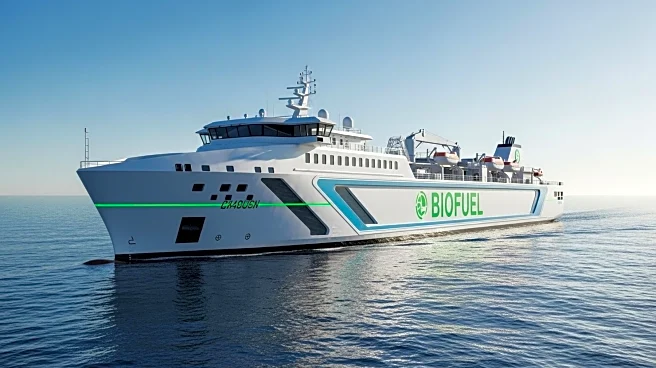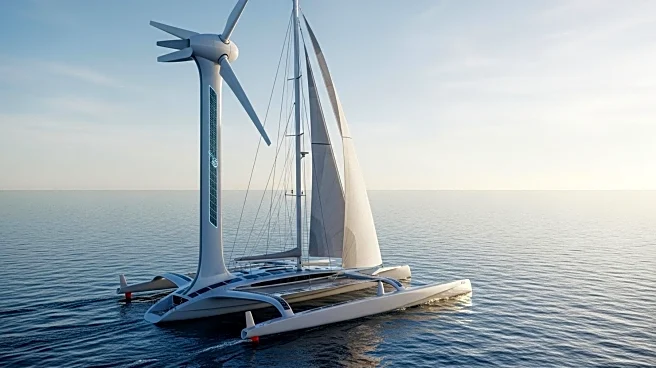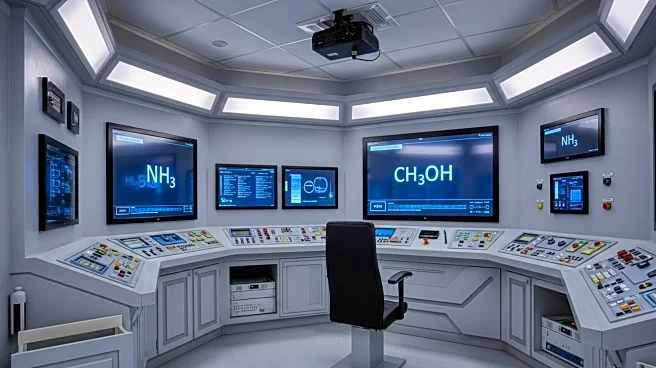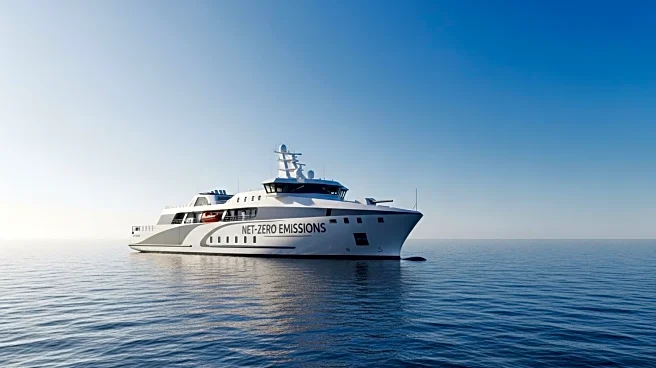What's Happening?
The maritime shipping industry is increasingly focusing on decarbonization, with electrified ports emerging as more competitive due to lower operational costs, better health outcomes, and reduced emissions. A recent roadmap outlines a phased approach to port electrification, starting with ground equipment and moving to harbor vessels, shore power for ships at berth, and eventually coastal and blue-water shipping. This transition is driven by the need to replace diesel with electricity wherever possible, reserving liquid fuels for the most challenging segments. Electrified ports are expected to offer lower costs and healthier working conditions, making them more attractive to shippers as global trade shifts away from fossil fuels and raw ores.
Why It's Important?
Decarbonization of ports is crucial for reducing emissions and improving air quality in urban areas adjacent to these industrial hubs. Electrified ports are positioned to gain a competitive edge as they offer lower operational costs and align with regulatory requirements for reduced carbon emissions. This shift is significant for the maritime industry, which is a major contributor to global emissions. As ports transition to electrification, they will attract more business from companies prioritizing sustainable supply chains, potentially reshaping global shipping patterns and economic activities. The move also supports public health by reducing diesel exhaust and noise pollution in nearby communities.
What's Next?
The roadmap suggests a gradual implementation of electrification technologies, with inland shipping expected to electrify first, followed by short-sea shipping and eventually ocean-going vessels. Ports will need to invest in infrastructure such as shore power connections and renewable energy sources like offshore wind and solar to support increased electricity demand. As battery technology improves, more segments of shipping can transition to electric power, reducing reliance on biofuels. Ports that fail to adapt may lose business to more sustainable competitors, highlighting the urgency for industry-wide adoption of decarbonization strategies.
Beyond the Headlines
The transition to electrified ports involves significant investment and infrastructure development, which may face challenges such as grid expansions and ship retrofits. However, the long-term benefits include reduced emissions, improved public health, and enhanced competitiveness in the global shipping market. The roadmap emphasizes the importance of modular and flexible systems to accommodate uncertainties in technology and supply chains, ensuring ports can adapt to changing conditions and continue to support sustainable shipping practices.










